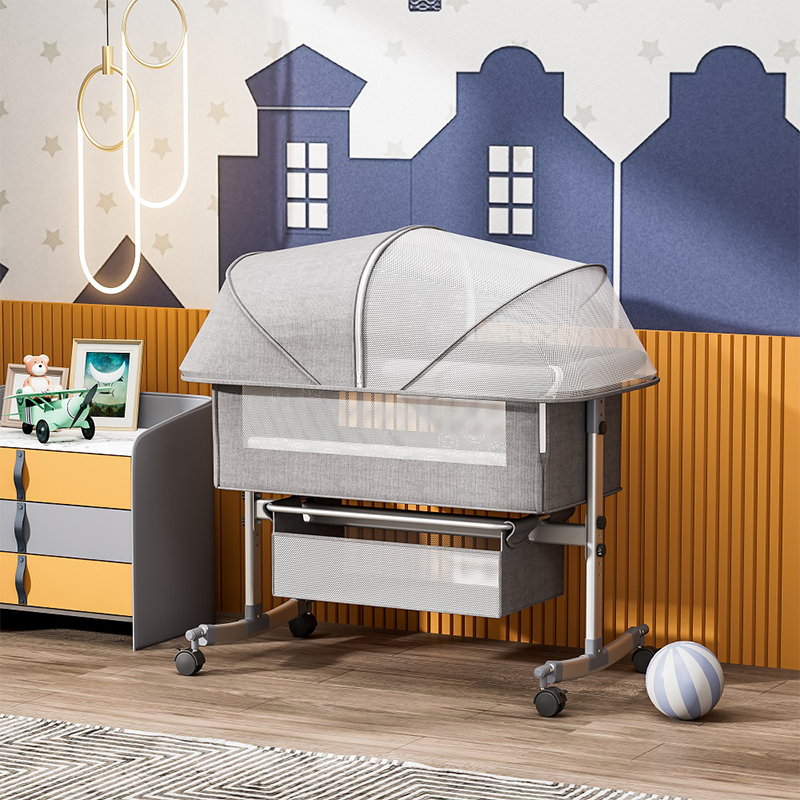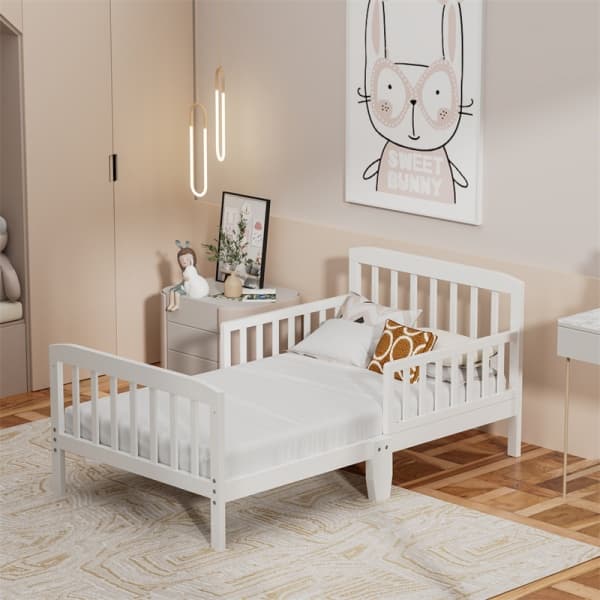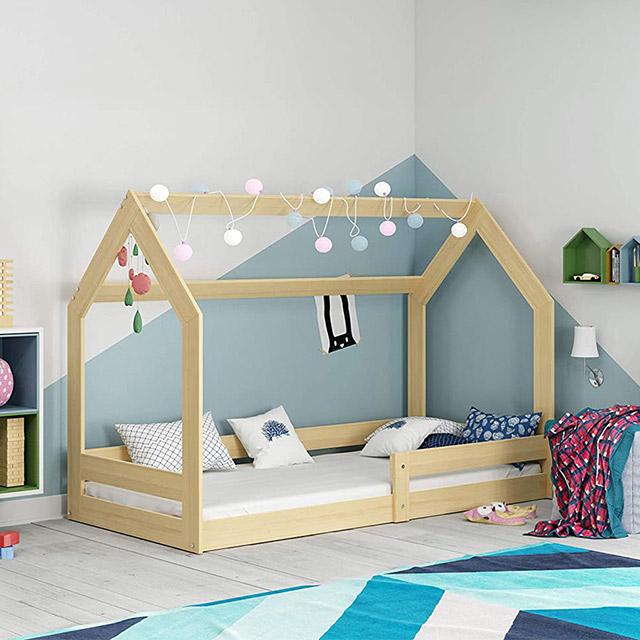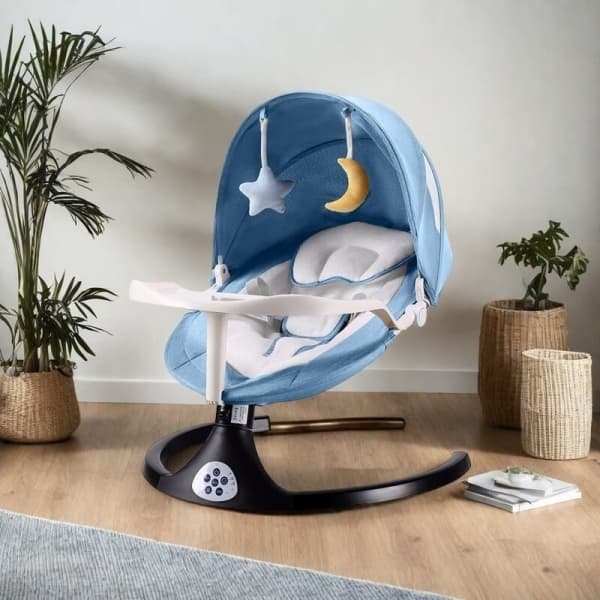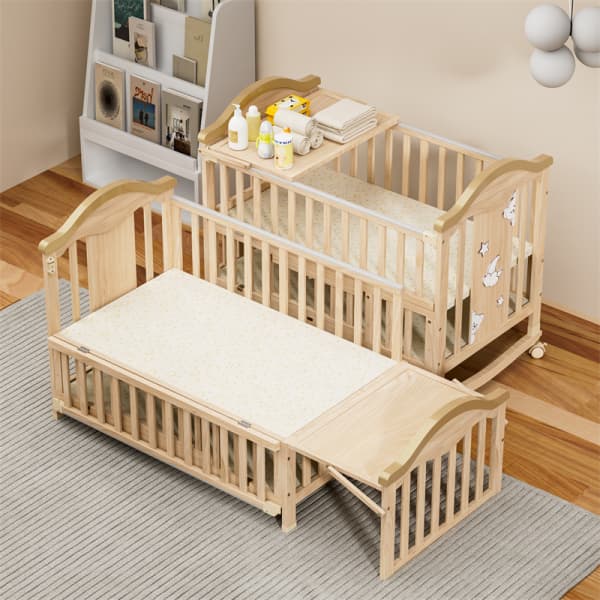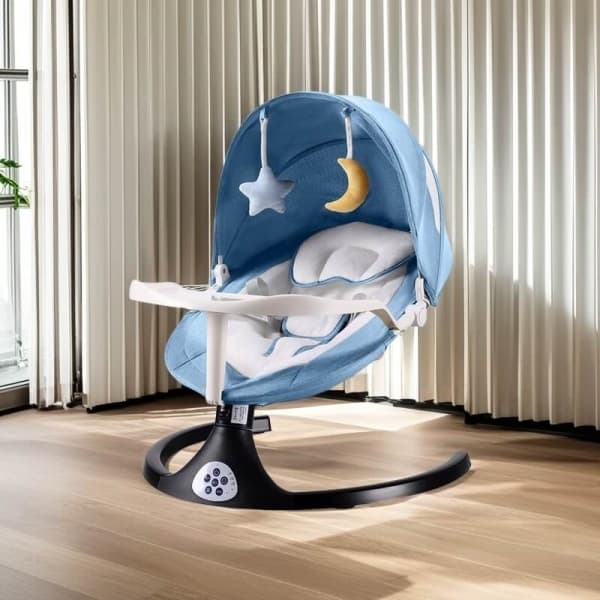As a nurturing parent, witnessing your newborn cherub drift into peaceful slumber is a sight that warms the heart. However, the journey to achieving consistent bassinet sleep can be fraught with challenges. Fear not, for this comprehensive guide will equip you with a wealth of strategies to gently coax your little one into embracing the bassinet as their cozy haven.
Understanding Newborn Sleep Patterns
The Basics of Newborn Sleep Cycles
Newborns have distinct sleep cycles compared to adults, often characterized by shorter sleep periods and more frequent awakenings. Their sleep cycles typicallyrange from 50 to 60 minutes, which include both active (REM) and quiet (non-REM) sleep stages.
Differences Between Day and Night Sleep
Newborns do not initially differentiate between day and night, leading to irregular sleep patterns. It is common for them to be more awake during the night, which can be challenging for parents.
Newborns have unique sleep patterns that can be challenging for new parents to navigate. Understanding these sleep patterns and needs is essential for helping newborns adjust to sleeping in a bassinet. With patience, consistency, and a few strategies, parents can help their newborns become more comfortable and adaptable to sleeping in a bassinet.
Why Some Newborns Won’t Sleep in Bassinets?
Babies like Closeness
Newborns have a strong need for physical closeness and comfort. They feel more secure and comforted when sleeping in close contact with their parents. There’s no cozier place for your newborn than the warmth of your loving arms. However, this preference can inadvertently create a sleep association that makes their sleep in the bassinet a daunting task.
Unfamiliar Surroundings Make the Baby Feel Uneasy
The baby cradle may be an unfamiliar and uncomfortable environment for the newborn, who is used to the warmth and security of the womb or their parent’s arms. This transition can make the baby feel uneasy and restless.
Gassy Woes and Reflux Discomforts
Digestive issues like gas or acid reflux can transform the simple act of lying down into a torturous ordeal for your little one. As they grapple with these discomforts, the prospect of drifting off peacefully in their bassinet becomes a distant dream.
If your little one is grappling with gas or acid reflux, adjustments to their feeding routine and positioning can work wonders. Consider keeping them upright for 20-30 minutes after feedings, burping them frequently, and exploring gentle massage techniques to alleviate discomfort before attempting bassinet sleep.
Babies Are Prone to Startle Reflex
Imagine being jolted awake every time you’re lowered into your cozy bed – that’s the reality for newborns experiencing the startle reflex. This innate response, triggered by sudden movements or loud noises, can instantly rouse your baby from their slumber, leaving them wide-eyed and bewildered.
Uncomfortable Sleeping Environment
Imagine yourself attempting to slumber on an unforgiving surface or amidst stifling heat – it’s an uphill battle, isn’t it? Newborns, with their delicate senses, are equally susceptible to discomfort stemming from various sources. An ill-fitting mattress, scratchy fabrics, or improper temperature regulation can all contribute to their unrest, making it challenging for them to settle into restorative slumber.
The Baby Is Too Tired
Counterintuitively, an overtired baby may resist sleep more vehemently than a well-rested one. When their internal clock goes haywire, their stress hormones surge, making it increasingly difficult for them to settle down and embrace the bassinet’s calming embrace.
Recognizing the signs of overtiredness is crucial, as catching it early can prevent a downward spiral into resistance. There are some common sleep cues:
- Yawning: One of the most recognizable signs.
- Rubbing Eyes or Ears: Babies often rub their eyes or ears when they are tired.
- Decreased Activity: Slowing down or becoming less interested in play.
- Staring Blankly: Gazing off into space or looking less engaged.
- Fussiness: Becoming more irritable or cranky.
- Clinginess: Wanting to be held more than usual.
- Sucking on Fingers or Pacifier: Increased need for comfort sucking.
- Crying: Escalating fussiness leading to crying.
- Loss of Interest in People or Toys: Turning away from stimuli.
- Jerky Movements: Arms and legs move more erratically.
- Rooting: Newborns may start rooting or looking for a breast or bottle even if they are not hungry.
- Quieter: Becoming quieter and less active.
- Eyelid Drooping: Eyelids may start to droop or they may have trouble keeping their eyes open.

Ways of Getting Newborns to Sleep in the Bassinet
Create a Sleep-Inducing Environment
1. Swaddling: Swaddle your baby to mimic the snug feeling of the womb.It can prevent the startle reflex that often wakes newborns. Use a light, breathable blanket and ensure it’s snug but not too tight around the hips.
2. White Noise: Use a white noise machine or app to mimic the sounds of the womb. Newborns are accustomed to the constant sound of blood flow in the womb, which is similar to white noise. Using a white noise machine or a fan can help create a familiar and calming environment that blocks out sudden noises that might startle them.
3. Dim Lighting: Keep the room dim or dark to signal to your baby that it’s time to sleep. Avoiding bright lights helps maintain their circadian rhythm and encourages the production of melatonin, the sleep hormone.
4. Room Temperature: Ensure the room is at a comfortable temperature, typically between 68-72°F (20-22°C). Dress your baby in appropriate clothing and use light blankets or sleep sacks.
Take Advantage of Baby’s Natural Sleep Cycle
Pay attention to your baby’s sleep cues, such as yawning, rubbing eyes, or becoming fussy. Crying can also be a late sign of tiredness. It’s best to act on earlier cues to prevent your baby from becoming overtired, which can make it harder for them to fall asleep.
Understanding your baby’s wake windows (the amount of time they can comfortably stay awake between naps) can prevent overtiredness. Newborns typically have short wake windows of 45 minutes to an hour and a half. Keep track of when your baby wakes up and aim to start the sleep routine within their wake window.
Establish a Bedtime Routine
1. Consistent Timing: Establishing a regular bedtime routine at the same time each night helps signal to your baby that it’s time to wind down and prepare for sleep. This consistency helps regulate their internal clock.
2. Activities: Include calming activities such as a warm bath, gentle massage, quiet lullabies, or reading a short book. These activities should be predictable and soothing, creating a sense of security and helping the baby relax.
Master Good Soothing Skills
1. Rocking and Patting: Gentle rocking or patting can help calm a fussy baby. You can do this by holding your baby in your arms and rocking back and forth or using a rocking chair.
2. Pacifier: Using a pacifier can help satisfy the baby’s natural sucking reflex and provide comfort. It can provide comfort and help your baby settle without feeding.
3. Baby Massage: A gentle baby massage can help relax your baby’s muscles and calm their nervous system. Use gentle, rhythmic strokes with a bit of baby-safe lotion or oil.
4. Burping: Make sure to burp your baby after feeding to release any trapped air. This can prevent discomfort and reduce fussiness due to gas.
5. Use Your Voice: Speaking softly or singing a lullaby can be very soothing to a newborn. The sound of your voice is familiar and comforting to them.
6. Feeding: Sometimes, a feed is all it takes to settle a newborn. Ensure your baby is well-fed before trying to put them down to sleep. Be mindful of not letting them fall asleep at the breast or bottle as this might create a dependency.
Give Your Baby a Chance to Self-Soothe
Importance of Self-Soothing for Babies
While it may be tempting to rush to your baby’s side at the first whimper or cry, allowing them the opportunity to self-soothe can be a valuable skill for both you and your little one. However, this process requires patience, consistency, and a gentle approach.
Babies who can self-soothe are able to fall asleep on their own without needing constant intervention from parents. This can lead to better sleep habits and longer periods of uninterrupted sleep. When babies can soothe themselves back to sleep, they are less likely to fully wake up during brief nighttime arousals. This means fewer nighttime disruptions for both the baby and the parents.
Detailed Methods
If you always rock or feed them back to sleep, they will expect this every time they wake up. Instead, try to offer comfort with minimal intervention and give them a chance to settle on their own. Place your baby in the bassinet or crib when they are drowsy but still awake. This allows them to associate the sleep environment with the process of falling asleep, rather than needing to be rocked or fed to sleep.
If your baby starts to fuss, wait a few minutes before intervening. Sometimes they might settle themselves back to sleep. If you need to intervene, do so briefly and then step back to give them another chance. If your baby is having difficulty settling, offer reassurance by speaking softly or gently patting them while they are in the bassinet or crib. Avoid picking them up immediately as this can reinforce dependency on being held to sleep.
Gradually reduce your presence as your baby learns to self-soothe. Start by staying close by and providing comfort with your voice or a gentle touch, then slowly decrease the amount of intervention over time.
Give Your Baby Gentleness and Patience
Getting your child to sleep in a cradle can be a challenging process, especially for new parents who are still finding their way. This journey requires a significant amount of tenderness and patience, as your child learns to adapt to sleeping alone in a cradle. It’s essential to understand that this adaptation period is not short, and your gentle and patient approach will play a crucial role in helping your child feel secure and comfortable.
Babies have their own unique sleep patterns and it’s normal for them to resist new sleeping arrangements at first. Expecting immediate results can lead to frustration, but understanding that your baby needs time to adjust can help you remain calm and supportive. There will be nights of frequent wakings, and moments of fussiness, but maintaining a patient demeanor shows your baby that you are there for them, no matter how long it takes.
How to Make the Bassinet More Comfortable?
Soft, Breathable Bedding: Use a firm, breathable mattress and soft, breathable bedding like cotton or muslin sheets.
Gentle Rocking or Vibration: Some rocking bassinets have built-in rocking or vibration features that can help soothe the newborn and promote sleep.
Positioning Aids: Use positioning aids like a wedge or rolled-up blanket to gently elevate the newborn’s head and upper body, which can help with reflux or congestion.
Familiar Scents: Place a small, soft item with the parent’s scent in the bassinet to help the newborn feel more comfortable and secure.
Safety Considerations When Using a Bassinet for Newborn Sleep
Proper Bassinet Assembly: Make sure the bassinet is properly assembled and that all safety features, such as the locking mechanism, are functioning correctly.
Positioning: Always place the newborn on their back to sleep, never on their side or stomach.
No Loose Items: Remove any loose items, such as toys, pillows, or blankets, that could pose a suffocation or strangulation hazard.
Bassinet Stability: Ensure the bassinet is placed on a stable. It should not wobble or tip over easily. If the bassinet has wheels, make sure they are locked when the bassinet is stationary.
Airflow: Make sure the bassinet has adequate airflow and is not placed in a way that could restrict airflow. Choose a bassinet with breathable mesh sides. Avoid bassinets with padded, pillow-like sides as they can pose a suffocation risk if your baby rolls into them.
Follow Weight and Age Limits: Adhere to the bassinet manufacturer’s weight and age limits for the bassinet. Most bassinets are designed for babies up to 15-20 pounds.
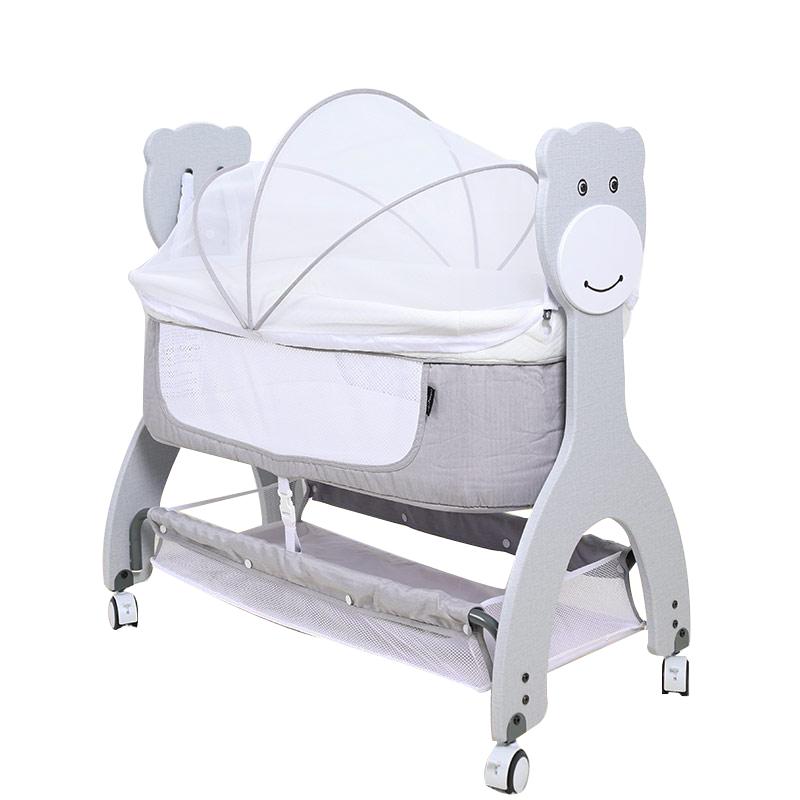
Choosing the Right Bassinet for Your Newborn
In addition to implementing the aforementioned techniques and safety recommendations, you can expedite your baby’s transition to independent sleep in the bassinet by acquiring a cozy and secure bassinet for them. A high-quality bassinet not only provides comfort for your baby but also allows parents to conserve energy and time when teaching their little one to sleep in the bassinet. Here’s a detailed guide on how to select the perfect bassinet for your child:
1. The Bassinet Must Meet Safety Standards
Verify that the bassinet meets safety standards set by reputable organizations such as the Consumer Product Safety Commission (CPSC) or the Juvenile Products Manufacturers Association (JPMA). These certifications ensure that the bassinet has passed stringent safety tests.
Opt for a bassinet with breathable mesh sides. Mesh sides ensure proper airflow, reducing the risk of suffocation and helping regulate your baby’s temperature.
2. Choose a Portability Option if Needed
If you need to move the bassinet between rooms, choose one that is lightweight and has wheels or handles for easy portability.
3. Balance Size and Space
Measure the area where you plan to place the bassinet to ensure it fits comfortably. If you have limited space, look for a small bassinet that still offers enough room for your baby to sleep safely.
4. Focus on Additional Features
Some bassinets come with extra features like storage pockets, vibration settings, rocking mechanisms, or built-in white noise machines. While not essential, these can add convenience and comfort.
5. Popular Bassinet Types
- Traditional Bassinets: Standalone bassinets that are typically lightweight and may include features like storage baskets.
- Co-Sleeper Bassinets: Attach to the side of the parent’s bed, making nighttime feedings easier while still providing a separate sleep space for the baby, making it a great option for breastfeeding mothers.
- Travel Bassinets: Lightweight, portable options designed for easy assembly and disassembly, ideal for families who travel frequently.
- Smart Bassinets: Equipped with technology such as automatic rocking, white noise, and movement sensors to soothe babies back to sleep automatically.
FAQs
Q: How can I get my newborn to sleep longer stretches at night?
A: Establish a consistent bedtime routine, ensure they are well-fed, and create a calm sleep environment to encourage longer sleep stretches.
Q: Is it safe to let my newborn sleep in the bassinet all night?
A: Yes, as long as the bassinet meets safety standards and guidelines, it is safe for your newborn to sleep in the bassinet all night.
Q: How can I transition my baby from the bassinet to the crib?
A: Gradually transition by starting with naps in the crib, then moving to nighttime sleep once your baby is comfortable.
Q: What if my baby only sleeps when held?
A: Work on creating a consistent sleep routine and slowly transition your baby to sleeping in the bassinet by putting them down drowsy but awake.
Q: How often should I check on my newborn during the night?
A: Frequent checks are common initially, but as you and your baby get more comfortable, you can gradually reduce the frequency, ensuring they are safe and sound.
Conclusion
Helping a newborn sleep in the bassinet requires patience, consistency, and a calm approach. Remember, the journey is not a sprint but a marathon, and every baby progresses at their own pace. With patience, consistency, and a nurturing approach, you and your little one will eventually find your rhythm, and the bassinet will become a cherished haven of peaceful slumber.
Recommended Related Articles:


